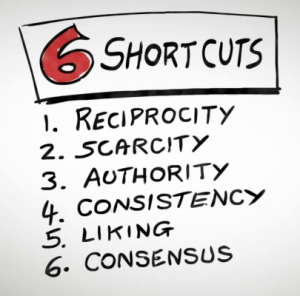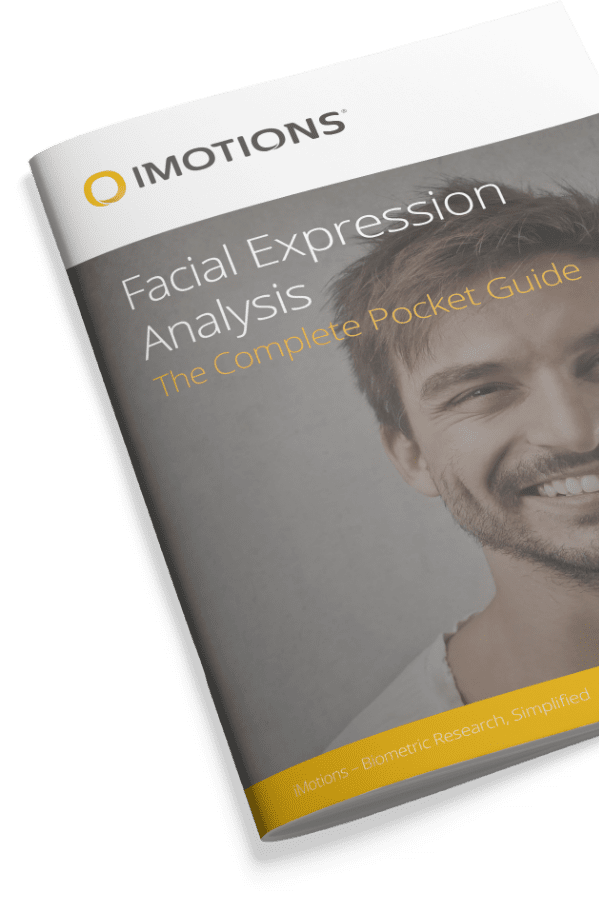Facial expression analysis is gaining popularity, and we at iMotions believe that its potential is enormous. Humans, along with our primate cousins, use facial movements to non-verbally communicate our ideas and feelings with others, even if we don’t always realize it. Our facial expressions are how we as members of a communicative and interconnected species show agency to the world around us. Analyzing facial expressions is a bit like reading into people’s minds, and it does not even require any superpowers. If a person’s facial expressions are analyzed properly, they can be an invaluable and actionable determiner of a person’s intentions whether it be behavior in general or purchasing behavior specifically.
Let’s start from the beginning. According to Harvard Professor Gerald Zaltman, 95% of purchasing decisions happen on a subconscious level. Although, when asked, most consumers explain that they compare products from different brands before purchasing the right one – this is not the case. Consequently, even though product attributes do matter, the way these are communicated is what makes all the difference.
Emotions and Maslow’s Hierarchy of Needs
Humans are needy and not nearly as complicated as we might think. In his paper “A theory of motivation”, published in 1943, American Psychologist Abraham Maslow defined and ordered 5 primary human needs, and an 8 tier pyramid called Maslow’s Motivational Model. The theory is presented in the form of a pyramid, with the most basic needs, such as physiological needs, at the foundational level.
The 8 needs are split into two larger categories, representing the two underlying motivations of humans: the need to avoid deficiency, and the need to grow.

The bracket “deficiency needs” is concerned with mostly primary needs, and less so with cognitive capacities. Humans, true to our species, have the same basic physiological needs as other animals: eating, drinking, and sleeping. With what we have gone through so far, we could as well be a herd of cows. But, as we all probably know, humans are needier than most.
This is where the top of the pyramid comes into play. All animals have needs that must be fulfilled in order to be satisfied. However, since most of their needs are deficiency needs, they will be content with a satisfactory level of fulfillment. As humans, we need more. On top of that comes the need to be safe in any given environment, such as a household. Love and affection are essential to us, and usually, go hand in hand with self-esteem. Your loved ones encourage and support you, giving you the necessary esteem to be satisfied. We are not satisfied with simply surviving, but we are animated with an inner flame that makes us want to grow and develop throughout our lifetimes.
These growth needs involve developing our cognitive capacities, learning and understanding our environment as well as seeking beauty and appreciating balance and cohesion. Exploiting our own potential, and developing our own and others’ talents are part of human needs.
Based on these needs, established by Maslow, which has been a founding theory in psychology, it can be observed that all the needs which differentiate us from animals revolve around emotions, cognition, and feelings. This proves just how important emotions are, and how much power they have over our decision-making.
Marketing to the needs of consumers
Taking Maslow’s Hierarchy of Needs into a marketing context, one could argue that to target consumers effectively, the messaging around a product or service could do well to appeal to either deficiency needs or growth needs, or both. Is your product an unbeatable mattress that promises uninterrupted sleep? That avoids deficiency. Are you a furniture design company with sleek chairs on offer? Tap into your buyers’ aesthetic need for beauty.
The higher you go on this pyramid, you will need to take your communication to a different level if you believe in this type of need-based messaging. Try to figure out whether persuasion, saliency, or logical advertising is the right fit for your campaign. There are several theories of advertising that can help you craft your messaging based on consumer psychology that you can check out here. Below, we discuss one such theory: Persuasion.
How are emotions involved in decision-making?
Selling a product to your customers means persuading them of the value of your product. As customers take each step forward along the way of the customer journey towards the purchasing decision, they are more and more convinced of the attributes of the product, and you are able to influence that by using a set of strategies. The principles of persuasion have been defined by Robert Cialdini as reciprocity, scarcity, consistency, authority, liking, and consensus. These techniques will help your marketing strategy to be effective, and to influence behaviors.
Let’s take an example. The principle of reciprocity entails that one wants to give back what was given to him/her. On a marketing scale, this could mean that giving a free sample will influence a consumer to purchase a product, motivated by the principle of reciprocity.

So, evidently, most, if not all basic human needs revolve around emotions. Humans feel emotions, and back it up with logic: which means that emotions are the drivers of most, if not all, human action. Consequently, emotions are also the drivers of all purchasing decisions, and every purchase fulfills a need. For instance, buying the same groceries over and over again comes from a feeling of certainty and familiarity which generates comfort. These familiar products do also obviously generate pleasure and enjoyment but in a reassuring way. Similarly, purchasing a very expensive car generates the feeling of significance, of being unique and important. Have you ever wondered why limited editions always sell out faster than the ongoing collection of your favorite brand? That is simply because it creates a feeling of rarity and urgency in you. Customers will have an increased feeling of significance because the brand assures them of the uniqueness they will achieve by purchasing this product, solely due to the limited number of items in the world.
Realizing that emotions are the main driver of most purchasing decisions it could be tempting to immediately seek to start a marketing campaign based on appealing to the nonconscious emotional processes of your customers. But is that a good tip for a successful marketing strategy? It could be, but it is more tricky than it seems, because how does one know/anticipate the emotions of others?
Mind the gap between what consumers say and what consumers feel
The main issue with trying to determine consumer behavior is that consumers tend to think that their purchasing driver is based on functionality and rationality, but it is not. Therefore, marketers have to be able to be the bridge between what consumers think they feel, and what they actually feel. The problem does not lie in the fact that consumers do not wish to share their purchasing drivers, but in the fact that they are not always aware of them. As a matter of fact, there is a well-known gap between attitude and behavior. Having a certain attitude toward a product entails having beliefs and an opinionated position toward the product.

For example, believing that fast fashion is harmful to the environment is an attitude. However, believing it is one thing, but does not always mean you will not purchase it. Your behavior is a more accurate representation of what you feel than what you are actually thinking. Buying from fast-fashion shops can reflect a fear of spending too much on clothes, or the fulfillment of an emotional need after falling in love with a product. This cognitive dissonance often explains the gap between speech and action. However, consumers do not always have preconceived ideas of products. A purchasing decision can also be made in an instant based on one’s need, or a provoked emotion.
Facial expression analysis – a revolutionary tool for market research?
Thorough research has been conducted in the field of neuromarketing using eye tracking. These studies provided us with very valuable insights regarding what attracts the attention of customers and what they tend to look at. But remember, it’s the emotions that trigger purchasing decisions.

Facial coding is the process of measuring human emotions through facial expressions. With facial expression analysis, you can test the impact of any content, product, or service as it will invariably elicit emotional arousal and facial responses.
By using a webcam to conduct facial expression analysis of participants during research, the entirety of the face is observed, which can guide marketers toward a stronger strategy, based on emotional findings. As different images, videos, or scenarios are shown to consumers, their facial features will alter. Researchers should focus on identifying positive emotions, such as joy, comfort, or surprise, and focus their marketing on creating those.
Using facial expression analysis in marketing research will put the focus where it should be: on the emotional response of consumers. This is guaranteed to provide accurate and insightful information and would help to objectively analyze what human subjectivity cannot.
Free 42-page Facial Expression Analysis Guide
For Beginners and Intermediates
- Get a thorough understanding of all aspects
- Valuable facial expression analysis insights
- Learn how to take your research to the next level












